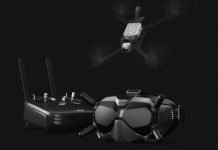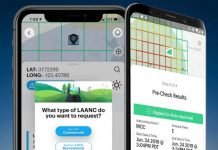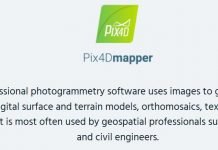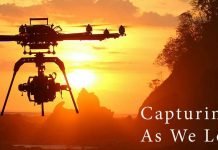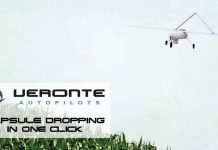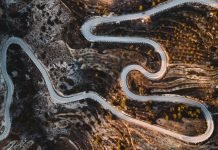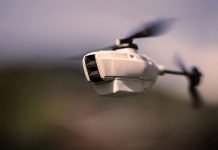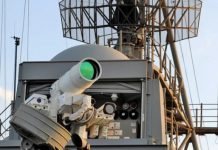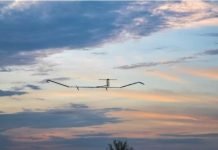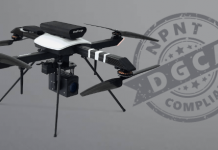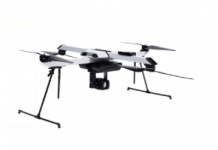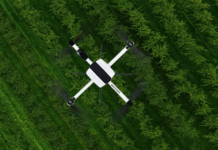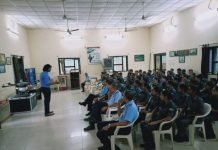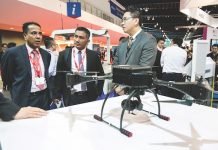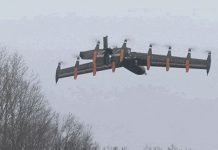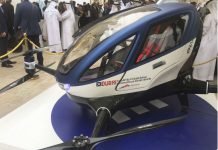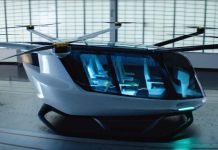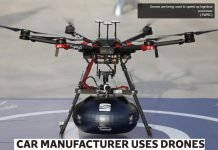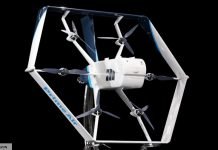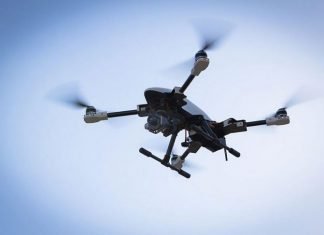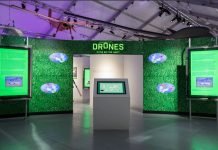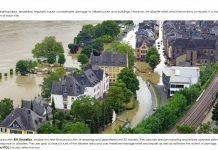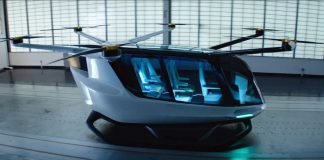
FPV cameras are small, light and reasonably priced. The FPV camera is mounted onto a drone to send real time video down to the ground using a video transmitter. The FPV camera allows you to see where the drone is flying and what it is seeing as if it had its own eyes.
Depending on the drone, the FPV transmitter will send the live video signal to your Remote Control screen, monitor, smartphone device, tablet or FPV goggles.
FPV cameras allow you to fly higher and further with some of latest drones being able to fly up to 5 miles away using FPV technology. Military drones or large high-end drones can fly thousands of miles using FPV technology.
This post answers the question of what is FPV camera systems and technologies. Here we explain the latest FPV camera technology on small consumer, commercial and FPV racing drones including CMOS or CCD imaging sensors, Fields Of View (FOV), TVL, Dynamic Range and much more.
When you understand FPV camera technology in drones, then you have the knowledge to make changes and expand the distance of the FPV live video. Another terrific article for you to read is entitled “Extending Drone Live Video, Gain And Range” which discusses further on how antennas, transmitters and receivers work.
What Is FPV Camera Technology In Drones
This below information is from DroneTrest article entitled FPV Camera Buying Guide.
Dedicated FPV Cameras
If you are already using a HD camera on your drone such as a GoPro, Foxeer Legend, or Runcam HD, you can just connect the video transmitter directly to the camera to get a live video feed. This is fairly common for most aerial photography drones as it lets you see what is in frame of your camera before you record or take a photo.
However the downside of using your action camera for FPV is that they all have latency issues. Although latency typically is around 100 to 200 ms (milliseconds), it is hardly noticeable with general flying and filming. However, this latency difference is too slow for FPV racing drones.
When flying at 50 mph (a typical speed for an experienced FPV racer), a 100 ms delay can mean your drone will travel about 6 feet before you receive the video, which could mean the difference in you missing an obstacle or hitting it. By using a dedicated FPV camera, your FPV system will have a much lower latency. A latency of less than 40 ms is what you can expect.
In the rest of this post we will assume that you are deciding upon using a dedicated FPV camera and we will discuss the relevant aspects which you need to consider when using a dedicated FPV camera.
FPV Camera Image Sensors – CCD or CMOS
The image sensor of your FPV camera will affect its performance. FPV cameras use either a CMOS or a CCD sensor. So which is better? The short answer in terms of image quality is the CCD sensors are better. However CCD sensors are more expensive and for FPV applications the slight improvement in image quality does not always justify the extra cost.
When CMOS Camera Sensors Are Better
As mentioned above, the main advantage of CMOS cameras is that they are cheaper than CCD cameras and have good enough performance for FPV applications. Cost can be an important factor even if you are an ace FPV pilot as it is not uncommon for you to crash your FPV racing drone. Since your camera is mounted in the front of your quadcopter, it is usually the first thing to absorb the impact.
However most decent FPV racing frames have some sort of camera protection built in to avoid the camera taking the full impact. CMOS cameras are also usually lighter and use less power than CCD which is only really important on some micro drones, but it is still something in their advantage.
In general most drone pilots use CMOS cameras due to their wide availability and cost. We currently recommend this 800 TVL CMOS 1.4 camera for FPV.
When CCD Camera Sensors Are Better
CCD cameras use a global shutter which mean the entire image is captured at the same time. CMOS cameras use a rolling shutter and capture the image pixel by pixel from top to bottom which creates a rolling effect.
For FPV applications this usually means that when you have vibrations on-board your drone, it causes the unwanted jello effect. CCD cameras do not have this problem and usually have a wider dynamic range which mean they perform better in very bright and very dark conditions. Better than CMOS cameras.
Note: View this large selection of FPV cameras for drones which cover all the various specifications.
FPV Camera Video Transmission Latency
The latency of your FPV camera is caused by the camera processing all of the information from the image sensor. The faster the processing, the lower the latency. Action cameras like the GoPro are processing highly detailed images (up to 4K) while also outputting live video to your FPV transmitter.
This means they have a lot more information to process so most high definition action cameras have much higher latency values than a dedicated FPV camera which run on much lower resolutions.
As discussed previously although it is hardly noticeable with general flying, most drone pilots prefer to use a dedicated FPV camera when flying a racing drone. A 100 ms latency delay when flying at 50 mph can mean your drone will travel about 6 feet before the pilot receives the video. In many instances the drone has already crashed before the pilot realizes it.
Most FPV cameras have a latency of less than 40 ms, while most action cameras will have a latency of 140 ms or more.
The GoPro is an extremely popular camera and many drones are manufactured with the GoPro in mind. If you are building your own drone and want to use a GoPro as your FPV camera, then this first video will show you how.
Credits: dozenzon


